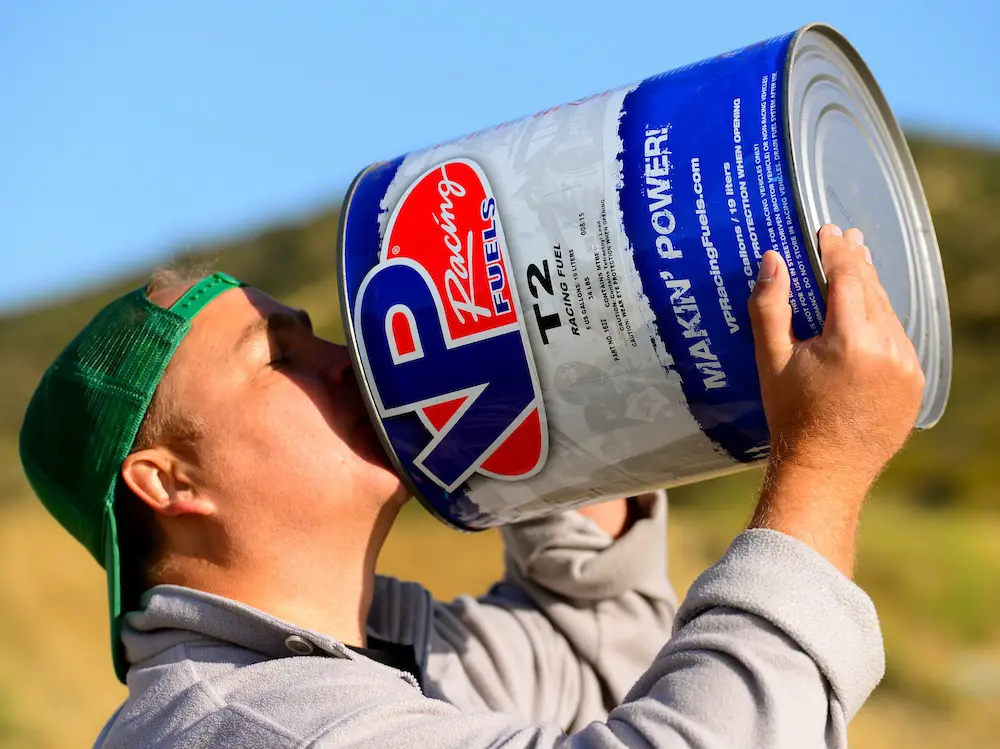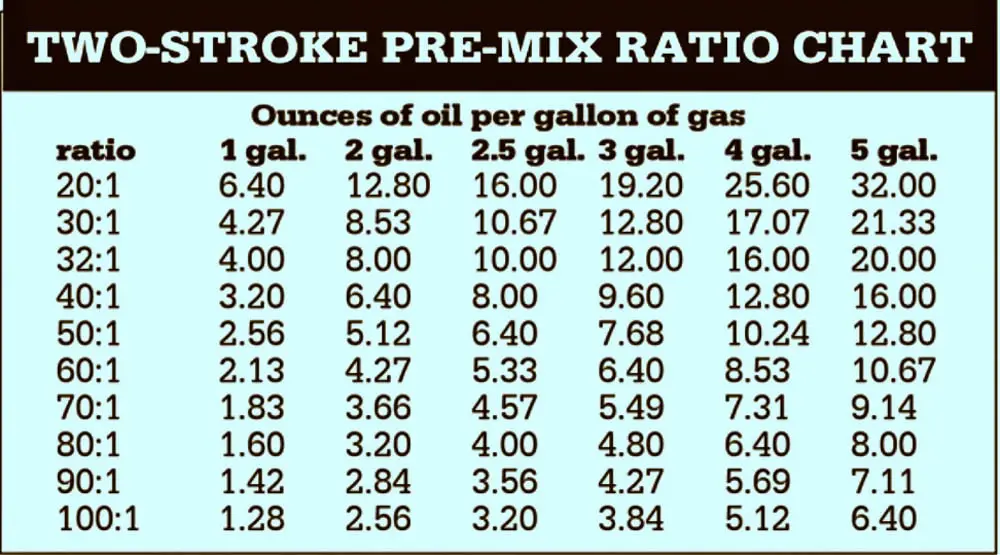TWO-STROKE TUESDAY: THE ART & SCIENCE OF PRE-MIX RATIOS
 VP T2 Racing fuel is race gas that is premixed with a 40:1 gas to oil mixture.
VP T2 Racing fuel is race gas that is premixed with a 40:1 gas to oil mixture.
The prerequisite for racing a two-stroke is that you have to mix oil in your gas. It is possible to purchase pre-mixed two-stroke fuel from VP Fuels, but most racers mix their own. Companies like Yamalube, Blendzall, Reverend Motors and Maxima all offer various oils and blends depending on your needs and desires. As a general rule, you are trying to find a ratio of oil to gas that works best for your engine and its state of tune. In the 1970s riders preferred to run 20:1 ratios (20 parts gas to one part oil). Over the years this morphed into 40:1 thanks to modern cylinder liners, piston metallurgy and carburetion.
Three things that dictate oil usage: (1) oil quality; (2) engine size and; (3) engine usage. For example, if you are running a model airplane engine, you have a small displacement engine that runs at high rpm. Oil migrates through this engine at a high rate of speed (referred to as the engine’s airspeed). The tiny piston is running at 30,000 rpm, so you need a ratio as high as 10 to 12 ounces of oil per gallon to reach proper lubrication.
Now, look at a large engine, like you’d find in personal watercraft (1200cc). It runs in the 7500 rpm range, so the oil stays in the engine 10 to 12 times longer. The oil has a longer migration time. In this case, you could probably get away mixing as little as 2 ounces per gallon. Engine usage has to be taken into consideration, too. The same size engine that is used for motocross can run less oil than if it is used for the high revving sport like or karting.
What is the best ratio for motocross? If you stick to high-quality lubricants, MXA recommends anywhere between 24:1 and 32:1 ratios for 125 and under bikes. You can run 32:1 to 50:1 ratios in your 250 and Open engines.
What about oils that claim a 100:1 ratio? That ratio is not based on reality. Once you understand oil migration, it is clear that a blanket statement like that doesn’t make sense.
Can’t you just run more oil to play it safe? There comes a point where too much oil will cause coating in the combustion chamber. The oil becomes a temperature barrier, and that raises engine temperatures. This will lead to detonation.
Are there any benefits to a richer ratio? A richer oil ratio can run cleaner, because of the detergents in quality oil. Also, more oil will make the piston rings seal better.








Comments are closed.